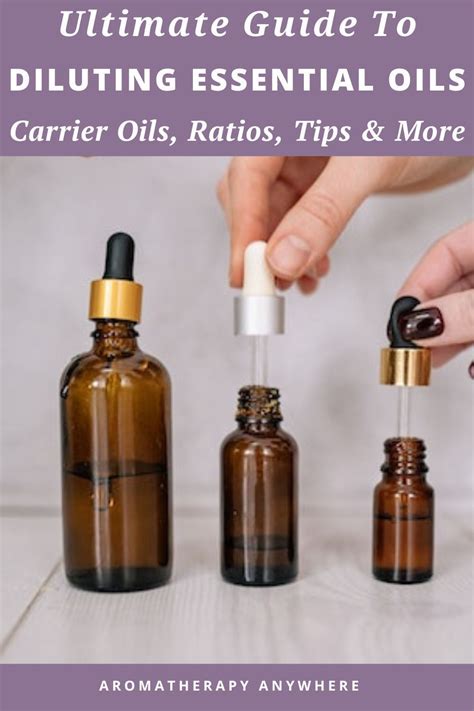Introduction
Essential oils are highly concentrated plant extracts that offer a wide range of therapeutic benefits. However, they are too potent to be applied directly to the skin and must be diluted with a carrier oil before use. This comprehensive guide explores the world of essential oil carrier oils and equips you with the knowledge to safely and effectively incorporate these natural remedies into your daily routine.

Section 1: Understanding Carrier Oils
Definition
Carrier oils are vegetable-based oils that serve as a base for essential oils. They help dilute essential oils, making them safe for topical application.
Types of Carrier Oils
There are numerous carrier oils available, each with unique properties:
| Carrier Oil | Properties |
|---|---|
| Jojoba Oil | Non-greasy, closely resembles skin’s sebum |
| Coconut Oil | Moisturizing, antibacterial |
| Almond Oil | Nourishing, rich in vitamins |
| Olive Oil | Antioxidant, anti-inflammatory |
| Avocado Oil | Highly nutritious, anti-aging |
Section 2: Why Carrier Oils Matter
Safety
Dilution with a carrier oil is crucial for preventing skin irritation and allergic reactions. Essential oils can be highly concentrated and may cause skin irritation, photosensitivity, or other adverse effects if applied directly.
Penetration
Carrier oils facilitate the transdermal absorption of essential oils. Essential oils are lipophilic, meaning they are attracted to fats, and carrier oils help them penetrate the skin’s lipid barrier more effectively.
Enhanced Aromatherapy
Carrier oils extend the lifespan of essential oils by providing a slow-release mechanism. This enhances the aromatic experience, allowing you to enjoy the therapeutic benefits of essential oils for a longer duration.
Section 3: How to Choose the Right Carrier Oil
Consider the following factors when selecting a carrier oil:
- Skin Type: Choose an oil that suits your skin type. Dry skin benefits from nourishing oils like avocado or almond oil, while oily skin prefers lighter oils like jojoba or grape seed oil.
- Intended Use: Different carrier oils have specific properties. For example, coconut oil is ideal for massage therapy, while olive oil is suitable for culinary purposes.
- Personal Preference: Ultimately, choose an oil that you enjoy the aroma and feel of. This will enhance your overall aromatherapy experience.
Section 4: Dilution Ratios
The appropriate dilution ratio depends on the essential oil and intended use:
| Essential Oil | Dilution Ratio (Carrier Oil: Essential Oil) |
|---|---|
| Lavender | 10:1 |
| Eucalyptus | 5:1 |
| Frankincense | 3:1 |
| Ylang-Ylang | 2:1 |
Section 5: How to Mix Essential Oils with Carrier Oils
- Choose your essential oils and carrier oil.
- Calculate the appropriate dilution ratio.
- Measure the carrier oil into a clean glass container.
- Add the essential oils to the carrier oil.
- Stir or shake the mixture thoroughly.
Section 6: Step-by-Step Applications
Massage
- Dilute essential oils: Dilute 3-5 drops of essential oil in 1 ounce of carrier oil.
- Apply to skin: Massage the mixture into the desired area using gentle circular motions.
Topical Application
- Dilute essential oils: Dilute 1-2 drops of essential oil in 5-10 drops of carrier oil.
- Apply to skin: Apply the mixture to the affected area using a cotton ball or swab.
Inhalation
- Dilute essential oils: Add a few drops of essential oil to a diffuser or humidifier filled with water.
- Inhale: Inhale the vaporized essential oils for therapeutic benefits.
Section 7: Tips and Tricks
- Test the dilution: Perform a patch test on a small area of skin before applying the mixture to a larger area.
- Start with a lower dilution: Gradually increase the dilution ratio as needed.
- Store properly: Keep essential oil blends in a cool, dark place.
- Clean your equipment: Regularly clean your diffuser, humidifier, and other equipment to prevent contamination.
- Use high-quality oils: Choose pure, therapeutic-grade essential oils and carrier oils for optimal results.
Section 8: Creative “Carrierology”
Beyond traditional applications, carrier oils offer a world of creative possibilities:
- DIY skincare: Combine carrier oils with essential oils to create customized serums, moisturizers, and cleansers.
- Aromatherapy jewelry: Infuse lava beads or porous materials with essential oils diluted in carrier oil for a personal aromatherapy experience.
- Home fragrance: Diffuse essential oils diluted in carrier oil to create a relaxing or invigorating atmosphere in your home.
Section 9: Conclusion
Essential oil carrier oils are essential for the safe and effective use of essential oils. By understanding the different types of carrier oils, dilution ratios, and application methods, you can harness the therapeutic benefits of essential oils with confidence. Remember to choose high-quality oils, test dilutions, and explore creative applications to integrate essential oils into your daily life.
